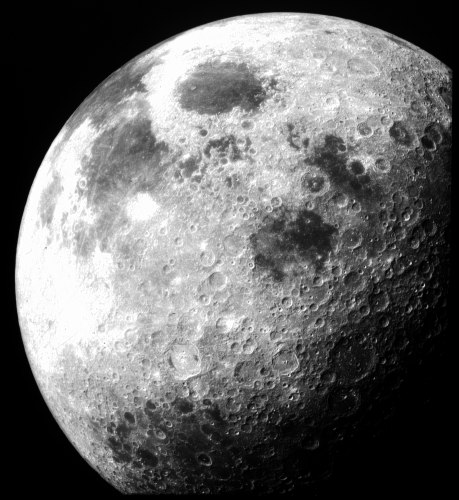A pair of new American spacecraft entered orbit about the Moon over the new year period, with the aim of measuring the Moon's gravitation field in unprecedented detail. Called the Gravity Recovery and Interior Laboratory (GRAIL), the twins will descend gradually towards a low lunar orbit over coming weeks, which by March will see them skimming a mere 30 miles above the lunar landscape.
 Once there, they will begin a 90-day science mission. Following one another around the Moon at a distance of around 200 km, they will use radar ranging systems to monitor their separation with a precision of 10 micron. By tracking tiny systematic changes in the distance between them, it will be possible to measure whether some parts of the Moon's surface have stronger gravity than other parts, providing evidence for different types of rock, with different densities, beneath the surface.
Once there, they will begin a 90-day science mission. Following one another around the Moon at a distance of around 200 km, they will use radar ranging systems to monitor their separation with a precision of 10 micron. By tracking tiny systematic changes in the distance between them, it will be possible to measure whether some parts of the Moon's surface have stronger gravity than other parts, providing evidence for different types of rock, with different densities, beneath the surface.
Eventually, it should be possible to convert a complete map of the Moon's global gravitational field into a map of the Moon's subsurface geology, from the surface right down to the core. A similar technique is already being applied to the Earth by the GRACE spacecraft, launched in 2002, which have proven sensitive enough to monitor changes such as the melting of the Earth's ice sheets due to global warming.
On the Moon, these measurements will tell us about the Moon's formation history. For example, there remains the mystery of why the far side of the Moon is on average 2 km higher in altitude than the near side: a much larger discepancy than can be explained by pure chance. A recent paper suggested that the Earth once had two moons which collided at low speed, and that the lunar highlands are formed from the remnant material from the collision. If so, that collision would have left subsurface signatures, and GRAIL will be the spacecraft to look for them.
References
- Previous Cockroach fueled battery
- Next Explosive X-ray diffraction










Comments
Add a comment